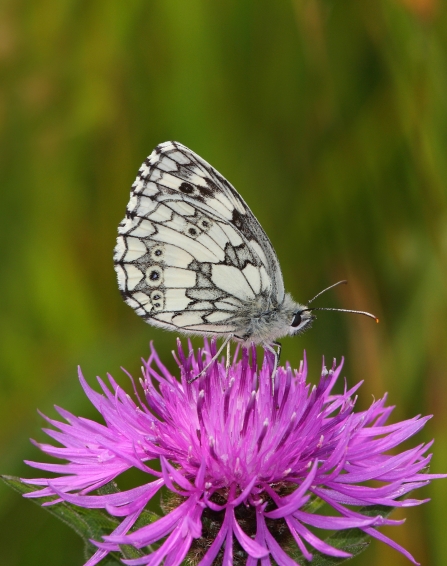
Meshaw Moor. Photo, David Chamberlain
Location
Know before you go
Dogs
When to visit
Opening times
Open at all timesBest time to visit
May to SeptemberAbout the reserve
Meshaw Moor is what many parts of mid and north Devon would have once looked, smelt, felt and sounded like.
It's patchwork of small irregular shaped fields are bounded by hedges. The fields themselves are classic Culm and flower-rich hay meadows. So rich is Meshaw's crop of summer flowers we often harvest its seed and use it to restore grasslands elsewhere.
Ash dieback
The disease ash dieback is now widespread in the UK and is present at many of our nature reserves, so we carry out tree felling across our sites in winter months. For your own safety please observe temporary path diversions and closures.
Where possible we will leave affected ash trees in place to decay naturally as an important habitat for wildlife. We plan to only fell diseased ash trees which pose a threat to people or infrastructure. Before trees are felled, we will check whether any rare or protected wildlife is present. If it is, we will postpone or avoid felling these trees. No felling will take place during the bird nesting season.
DWT’s Saving Devon’s Treescapes project are working with communities, landowners and businesses to help make Devon's precious treescapes more resilient in the face of ash dieback. Find out how you can get involved here.
NOTICE: If you are visiting our reserves, please note that there have been instances of H5N1 Avian bird flu found in birds in Devon. There is very low risk to public health, but we do ask that if you come across any unusual or unexplained bird deaths on or near our reserves, please do not touch them and avoid allowing your dog to come into contact with dead birds. Please report them to Defra here or call 03459 335577 and also report your findings to DWT by email at contactus@devonwildlifetrust.org.
Contact us
Environmental designation
Location map
How to get to Meshaw Moor

Marbled white butterfly. Photo, Chris Root
In spring and summer grasshopper warblers, tree pipits and yellowhammers sing from the sidelines using the shelter of traditional Devon hedgebanks and their oaks, ash and hazel.
The nature reserve's wet meadows bloom in summer with heath-spotted and southern marsh orchids, Devil's-bit scabious and meadow thistles. In the drier fields the tall purple heads of black knapweed nod in the breeze.
Passing through and above all this colour is a huge range of insects including crickets, grasshoppers, butterflies and dragonflies. Look for the black and white beating wings of marbled white butterflies - still a common sight here.
Venture to Meshaw Moor at dusk on a clear winter's evening to see the last feeding roe deer, before the hoots of tawny owls begin. This is a place where the absence of light pollution means wonderful night skies await you.
Become a member and support our work
The vital work we do for nature depends on the support of people who care about the future of Devon’s wildlife and wild places.




